In the Diamond Mountains :
Adventures Among the Buddhist Monasteries of Eastern
Korea
By the Marquess Curzon of Kedleston
Where every prospect pleases
And only man is vile.—Bishop Heber.
[The journey was made in October 1892 but this account
of it was published in the National Geographic
Magazine of October 1924, together with some 20
photos, of which only a very few have the Diamond
Mountains as their subject, and they seem to be from
various decades.]
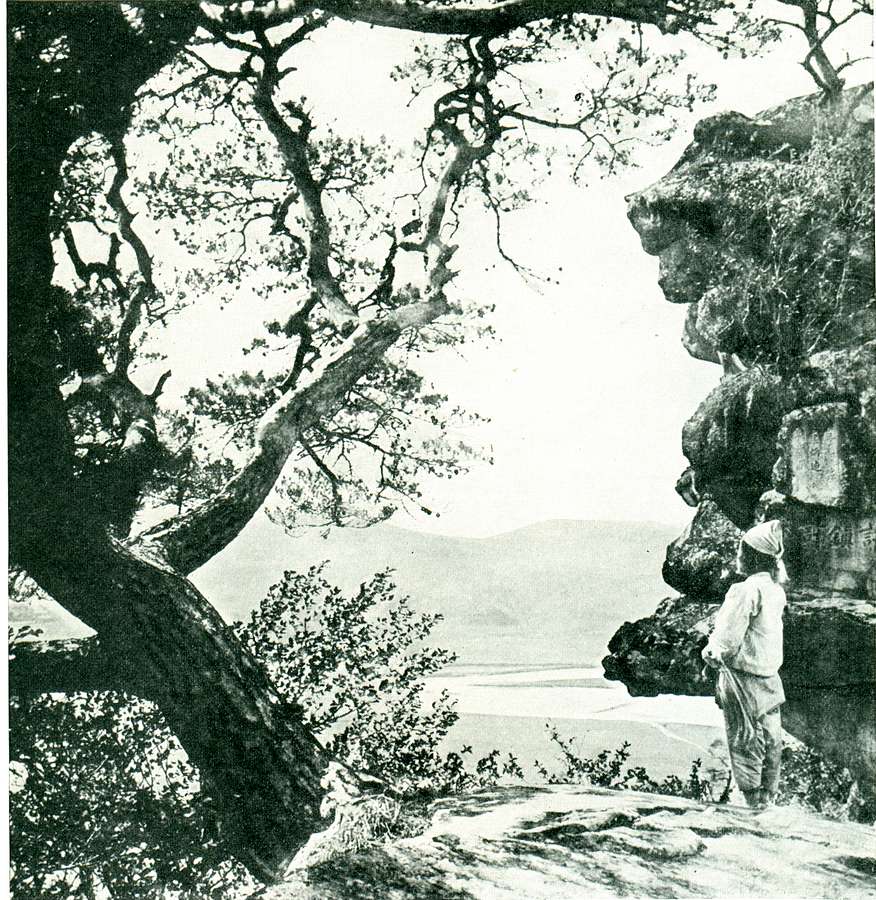
In the course of my travels I have come
across a good many monks and monkish communities and
have spent nights of interest, though hardly of luxury
and not always of repose, in monastic guest chambers or
cells.
I have walked in pilgrimage round the
pyramidal spires of Monserrat; have been hauled up in a
net to the eyries of Meteora; have dined with the abbot
of the great monastery of Troitsa, near Moscow; have
fraternized with the dwindling Greek fraternities of
Athos; and with the more prosperous Russians on Tabor;
have sojourned in the grim monastery of Mar Saba, near
the Dead Sea; was once rescued with difficulty, and only
by the tact and savoir-faire of my companion, Sir John
Jordan, from the menacing approaches of the Lamas in the
great Tibetan monastery at Peking; have addressed an
audience of 2,000 yellow robed Burmese monks at
Mandalay, and have slept at night on the polished temple
floors of the monasteries of Korea (Chosen).
I shrink, even after this rather
diversified experience, from generalizing about monks,
since I have found them divided, like other classes of
mankind, between saints and profligates, bons vivants
and ascetics, gentlemen and vagabonds, men of education
and illiterate boors. But of all my monastic adventures
I think that the ones which linger longest in my memory
are the days that I spent with my friend, the late Cecil
Spring-Rice, afterwards British ambassador at
Washington, in wandering among the monasteries of
eastern Korea.
And the reasons for my preference are
these:
First, the scenery amid which these
monastic retreats are hidden is among the most
enchanting in the East. Indeed, it may fairly be
described as one of the little known beauty spots of the
world.
Secondly, there was not the faintest
masquerade of piety among the great majority of these
rather seedy scamps, some of whom were quondam criminals
of the deepest dye; and this invested them with an
originality which, if not admirable, was at least
piquant.
And, thirdly, I had the supreme
satisfaction of arresting an abbot and carrying him off,
a captive of my bow and spear.
Doubtless other European travelers after my
day have threaded the picturesque gorges of the Diamond
Mountains; and, for all I know, since the vacuum-cleaner
of Japanese rule has sucked out the dust and dirt from
the crannies and corners of the dilapidated old Korean
tenement, the monasteries may by now have been
expurgated and the monks made respectable, and a road
for motor cars driven to the threshold of the Keumkang
San. But as I was one of the earliest Europeans to visit
those exquisite retreats. now 32 years ago (October,
1892), it may be worth while to set down a few of my
memories of the scene as it was in those unregenerate
days of mingled rascality and romance.
In my book on Korea I described the
incidents and features of travel as I saw them in that
singularly backward and unsophisticated country—the
little, sturdy, combative ponies; the garrulous,
quarrelsome, lazy pony-men, or mapus; the
indolent, strong-limbed people; the picturesque variety
of scenery, the perfect climate, the abundance of winged
game, the torchlit marches at night, the total absence
of roads, the incredibly disgusting native inns.
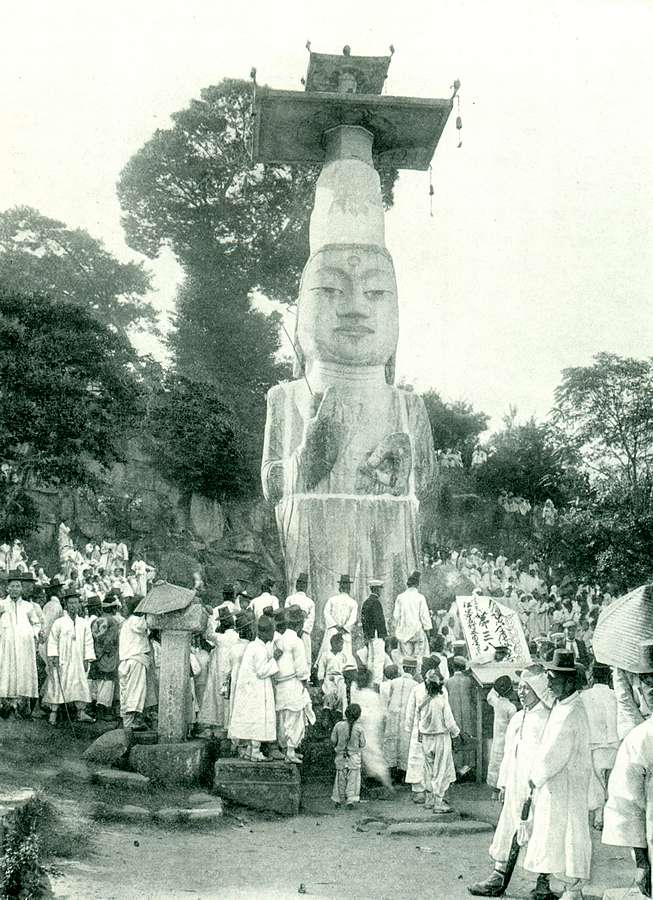 J. B. Millet
J. B. Millet
The "Eunjin Mireuk" in Gwanchoksa temple near Nonsan
is the largest stone Buddha in Korea. It represents
the Buddha of the Future.
Travelling to the Chief Monastery
of Korea
It
was amid such surroundings that my acquaintance with the
Korean cloister was made. We were marching from Wensan
or Gensan, a port on the eastern coast to the capital,
Seoul (Keijo), a distance of 170 miles; but we deviated
from the familiar track (which a railway now nearly
parallels) to visit the monasteries to the east of the
road.
It was soon after passing Narnsan, 15 miles
from Wensan, that we left the plain and plunged into the
interior of a wooded range. the crimson of whose
autumnal maples and chestnuts burned like a dying flame
against the sky.
Our destination was the monastery of
Syekwangsa, the chief or metropolitan monastic
establishment in Korea, founded about 500 years ago,
which I have not seen mentioned in the itinerary of
other travelers.
The bridle-path—for no road in Korea at
that time was any more or better—followed the windings
of a sylvan glen, down which brawled a mountain stream.
On either side were rocks on whose chiseled surface
centuries of pilgrims had inscribed their names in bold
Chinese characters.
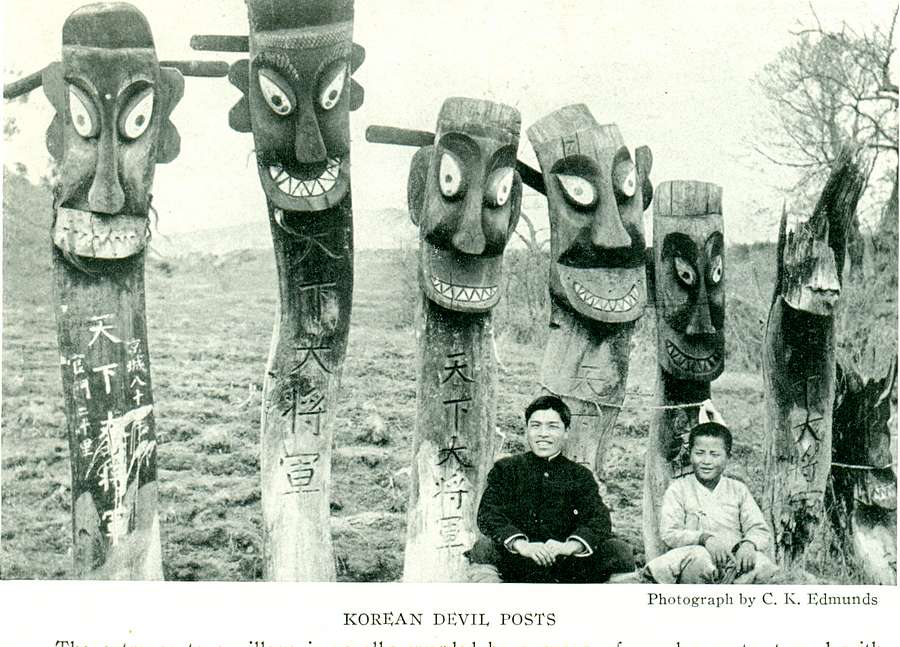
In turn we passed the cemetery of the
monks, marked by lanternlike pillars of stone, heavily
eaved resthouses built for visitors, and a series of
hideous painted wooden posts, each terminating in a
grinning head, erected to ward off the assault of evil
spirits. [*The theory is that all Nature is pervaded by
spirits and genii, who require to be propitiated and,
when malevolent, to he kept aloof.]
So we came, as the track broadened, to a
hollowed amphitheater, which seemed to have been scooped
out for the purpose in the hillside, where, on terrace
above terrace, stood the monastic buildings.
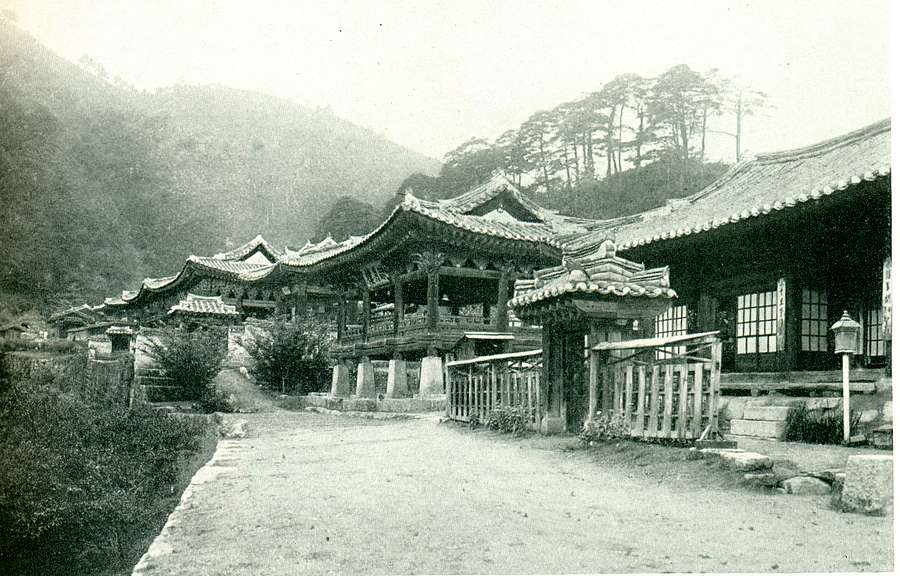 Curzon
Curzon
Seo-gwang-sa temple near Wonsan. Completely obliterated
by a 1951 US bombing
A Night with the Monks
It was near midnight when we arrived and
presented our letters of introduction to the abbot. He
showed us our quarters, and there we cooked and ate our
meal, before the whole company of monks, in an
atmosphere which might have been cut with a knife, not
getting to bed till two in the morning.
.
Our sleep was on a floor stretched with
oiled paper, as smooth and shining as marble : in the
middle stood an altar and a Buddha behind glass.
Daylight had not dawned before we were
aroused by the peripatetic tramp of an early monk,
tapping a drum and singing a lugubrious chant. Another
began to clap-clap upon a brass gong. Presently the big
drum on the platform over the entrance was beaten to a
noisy tune, and finally all the bells and gongs in the
establishment were set going at once.
We rose and dressed before an appreciative
crowd, who took an overpowering interest in our
equipment, and more particularly in our sponges and
binoculars.
Then the worthy abbot. robed in a gray
dress, wearing a black circular horsehair hat, and
holding a staff in his hand, appeared to conduct us
around. His tiny eyes twinkled with good-humored
benevolence; a gray stubble sprouted from his unshaved
cheeks and chin; his big lips poured forth a voluble
flood in an unfamiliar tongue.
One temple at the side contained a hideous
painted wooden Buddha. A cluster of buildings to the
left of the entrance, terminating in a prayer platform
that overhung the torrent, was said to be reserved for
the King.
In the side court of the inclosure, looking
like a collection of little dolls with hoods were the
upper part of the painted stone figures of 500 Lohans or
Arhans—i.e., disciples of Buddha who were supposed to
have framed the Sacred Canon with him in India. These
images had a grotesque leer upon their whitened faces.
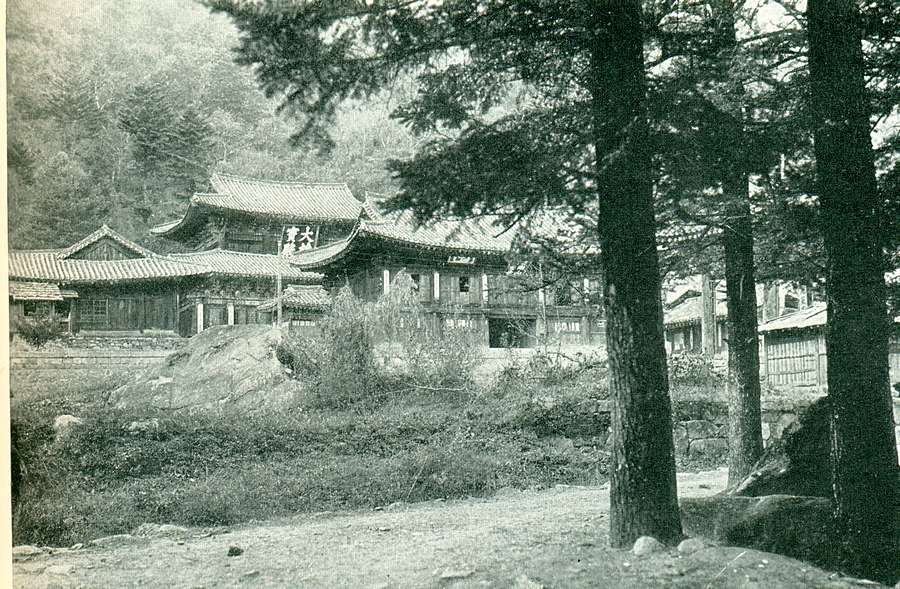 Curzon
Curzon
Jangan-sa temple in Geumgang-san
The Abbot Asks for a Double Fee
As we left, at 8:30 a.m., the good abbot
accompanied us to the gateway, and when I offered him
the paltry gratuity of one yen (50 cents) for the
night's hospitality, which I thought very shabby, but
had been enjoined at Wensan on no account to exceed, he
looked at the coin with an air of pained reproach and
murmured, "Couldn't you make it two?”
lt was quite impossible to resist this
pathetic appeal, my prompt response to which made him
quite happy and left me with the agreeable conviction
that human nature is much the same all the world over,
whether it be manifested in a London cabdriver or a
Korean abbot.
Anyhow, this excellent man stands forth in
my memory as the pleasantest and most human of all the
holy friars whom l was to see during the next few clays
of my wandering.
It was on the afternoon of the next day but
one that, leaving the main Wensan-Seoul track beyond
Hoiyang, we struck off eastward for our goal in the
Diamond Mountains.
The night was spent in the native village
of Sinhachang, where a rustic bridge of sticks and
shrubs, whose unstripped autumnal verdure made a ruddy
projecting fringe on either side, spanned a mountain
stream.
On the next day we climbed a pass to a
small shrine, or josshouse, which contained. amid a lot
of fluttering and filthy rags—the offerings of generations of
pilgrims—two pictures, said to be those of the King with
two boys, and the Queen with two girls.
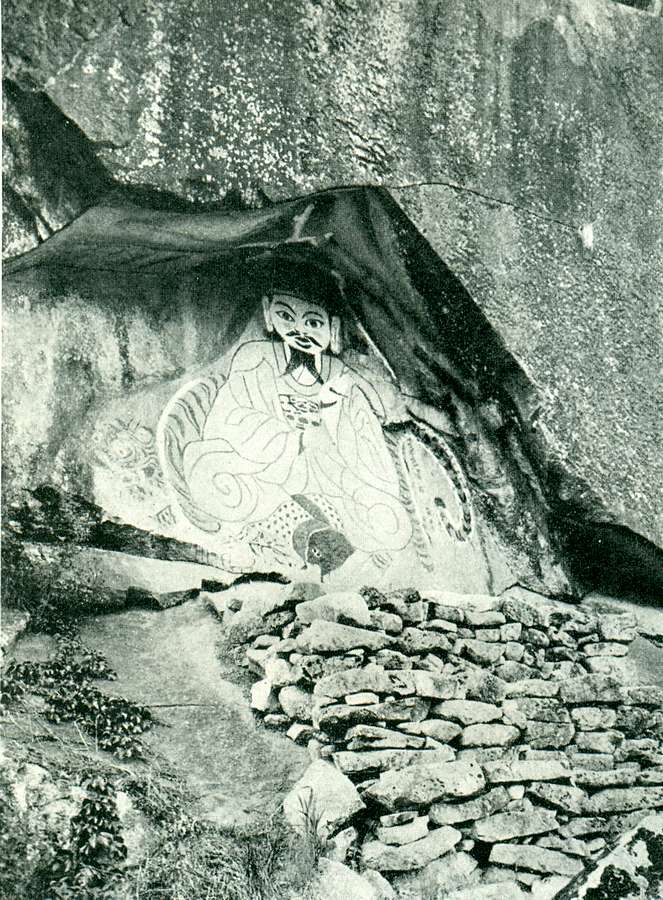 A. M. Mirzaoff
A. M. Mirzaoff
The Dlamond Mountains are Sighted
But this was not the real interest. Before
us lay a view, not unlike, but more beautiful than, the
wild outlook in the Matoppo Hills as you climb to Cecil
Rhodes' burial place in South Africa. Four successive
ridges, like the palisades of some huge mountain
fortress, the walls of each stained crimson with the
heart's blood of the dying maple, filled the foreground.
Each must be climbed and each descended before the
splendid barrier of the Keumkang San, or Diamond
Mountains, fifth in the sequence, was reached. [*It is
uncertain whether the title is metaphorical, or refers
to the serrated outline of the peaks, or is derived from
the Diamond Sutra, one of the best known of the Buddhist
scriptures. The Japanese form of the name is Kongo San,
and they call the monastery of Chongansa (the Korean
form) Choanji.]
It could be seen, standing up beyond and
higher than its outer barricades, thickly mantled up to
its shoulders, above which a battlement of splintered
crags cut a fretwork pattern against the sky. Redder and
more red glowed the wooded slopes as the sun declined,
and an ashen pallor flickered on the granite boulders
and needle spires.
The last valley bottom was crossed, the
last river rushing down it in a rockstrewn bed was
forded; the main range, in its livery of crimson and
gold, was now in front of us.
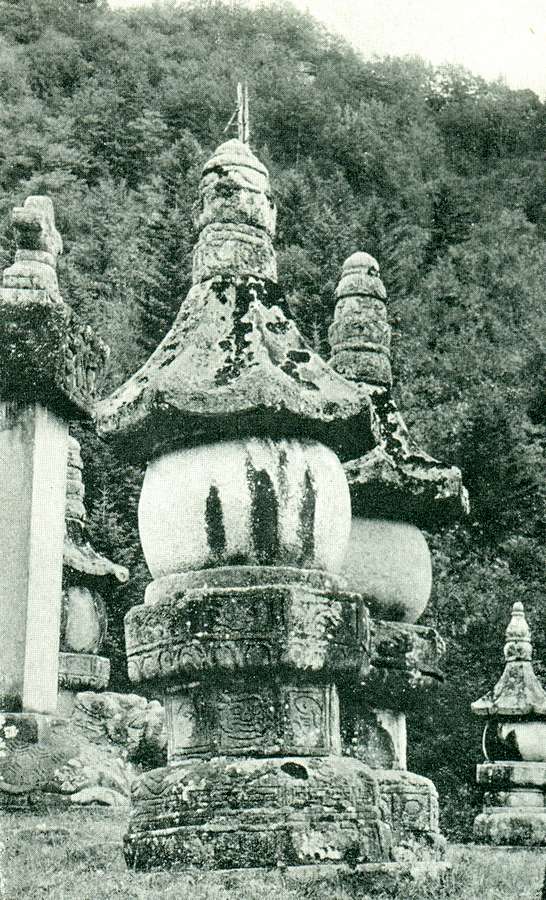 C. K. Edmunds
C. K. Edmunds
Many Images and Effigies in the
Temple Inclosure
A lovely walk through a piny glade, past
monastic resthouses and under the scarlet archway, of
the Hong Sal Mun, or Red Arrow Gate, that is the
precursor of all buildings in Korea under royal
patronage, led to a cleared space, where, above the
rushing torrent, a cluster of buildings stood with their
backs to a wooded hill.
These were the halls of the Chongansa [*Changansa] Monastery, or the
Temple of Eternal Rest, the oldest and most famous of
the monasteries of the Diamond Mountains
First is an open-terraced gateway,
completely hung with tablets recording the names of
subscribers and containing a grotesque wooden monster
painted red, green, and white, representing one of the
sernideified heroes or warriors, genii or spirits, who
have been added in the passage of time to the Buddhist
Pantheon, overlaying it with a mass of demonolatry that
has well-nigh obliterated the original faith. A big bell
hangs in a sort of wooden pen adjoining.
Next we pass through a pillared chamber
into the courtyard of the monastery, at the head of
which stands the main temple with double-tiered roof of
tiles and deep overhanging tip-tilted eaves. The
guest-houses are at the side.
In the central hall of the temple a gilded
Buddha is seated in the middle on a raised wooden
terrace or platform painted red. Above his head is a
fantastically carved and painted canopy and in front of
his face is suspended a green gauze veil.
Six great wooden pillars, a yard in
diameter, formed of single tree trunk and colored red,
support the roof, which is painted in faded hues of blue
and green.
At the side of the hall is a painted scene
containing three Buddhas, in front of whom are colossal
images of warriors with diabolical faces.
Below the Buddhas, and indeed in front of
every Buddhistic image, is a low stool or altar with a
copy of the scriptures and a small brass bell, the
indispensable ritual accompaniments of service.
On the right of the courtyard stand smaller
detached temples containing other hideous effigies,
colored red, green, and blue; their faces are, as a
rule, painted white, and distorted with a horrible leer.
One holds his beard in his hand; another, a book; a
third, a scepter.
Small figures like boys are placed between
them, carrying images of animals in their hands. Round
are hung paintings on frames.
The second largest of these pavilions
contains a fine pagoda canopy over the seated Buddha and
a single row of figures seated and standing all round on
a raised terrace.
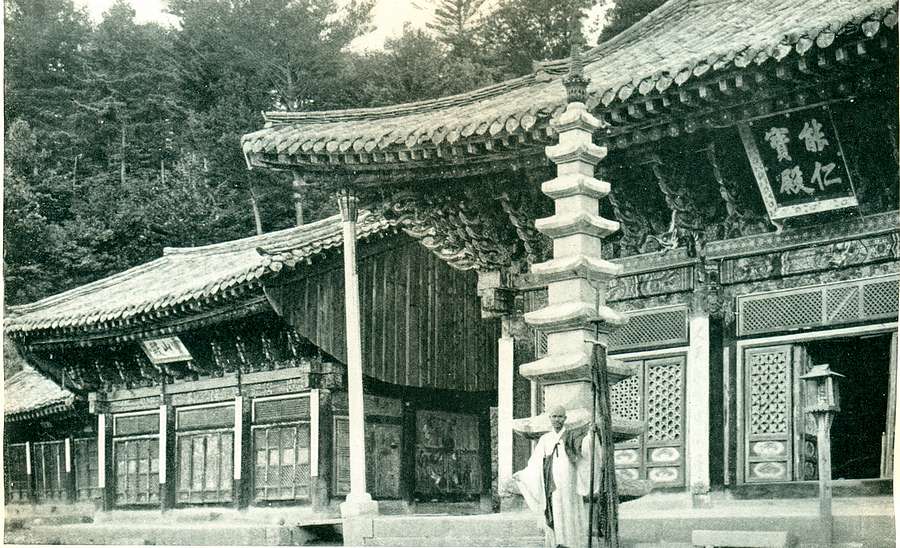 C. K. Edmunds
C. K. Edmunds
Yujeom-sa temple, Geumgang-san
A Bed of Korean Oil-Cloth Paper
Evensong began soon after our arrival.
A young monk pulled a gray robe over his
white dress and red hood, knelt on a circular mat,
intoned the conventional phrases, not one syllable of
which did he understand, struck a brass bell with a
deer's horn, and touched his forehead on the ground. The
act is one not of prayer, in our sense, but merely of
adoration.
We were accommodated in a guest hall or
temple, the floor of which was covered with the famous
Korean paper that glistened like worn oilcloth. We
unrolled our bedding at the foot of the altar, whence a
miniature Buddha smiled down upon us from a sort of
cage.
The monks—who had exhibited the liveliest
interest in our articles of toilet. particularly in
combs, nail scissors, and sponges, none of which had
they ever seen; still more in an inflated India-rubber
cushion, and most of all in a mouthplate of false
teeth—retired at 7 p. m. and left us to ourselves.
In the morning we saw the pad-marks and
droppings of a tiger, which had entered the courtyard
during the night and paced around the closed buildings.
Why he had been content to do no more, no one could say.
The jungles of northern Korea abound in these animals,
which levy an ample toll on animal and human life (for
many are man-eaters) and are pursued by guilds of
hunters with primitive weapons or caught in traps and
pits.
Here let me say a few words about the
Korean phase of monastic life, the last resorts of which
I am now describing.
It was in the early centuries of our
Christian Era that Buddhism made its way, it is alleged,
from India, but much more probably from China, into the
Korean peninsula. There in time it became not merely the
official cult of the royal and ruling classes, but also
the popular creed of the people.
Royal personages came on tour to the
monasteries of the Diamond Mountains, which are said to
have numbered 108 and which flourished greatly under
this august patronage.
For more than a thousand years pilgrims
from China and surrounding countries traveled great
distances to its altars, cutting their names with
infinite labor on the smoothed surfaces of the rocks and
boulders in the valley bottoms, where the only track lay
in the beds of the mountain streams.
Some of these inscriptions date back to the
13th century. In brass-bound chests in some of the
principal halls of worship are still kept books of great
value, printed in Chinese characters from wooden blocks
more than 1,000 years old.
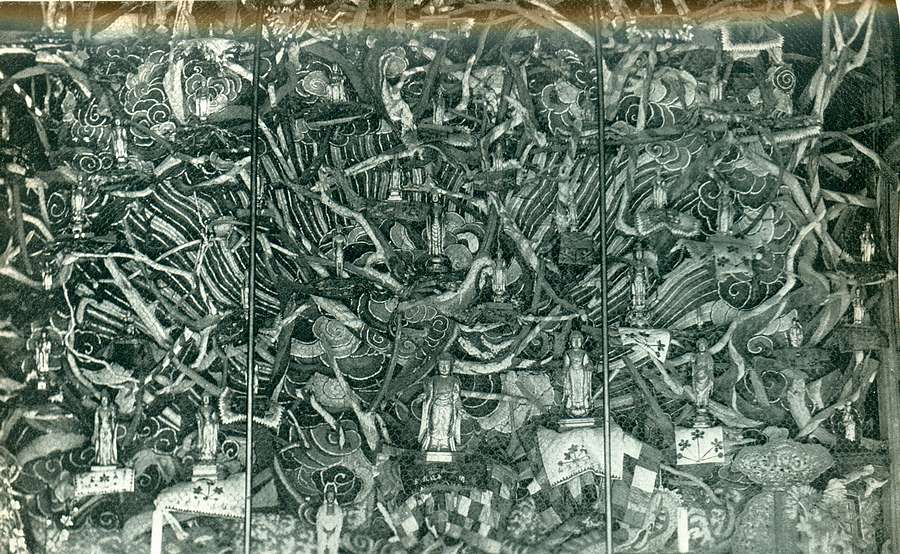 Curzon
Curzon
The 53 Buddhas in Yucheom-sa
Monks Become Outcasts
Then, more than three centuries ago, came
the period in which Buddhism, hitherto venerated and
popular, was rejected, disestablished, and despised,
being prosecuted by the court, whose official creed was
Confucianism, No monk was allowed even to enter the
gates of the capital; and the priests were degraded to
the lowest class of the people and were abandoned by the
population, whose barbarism sought refuge in the rudest
and crudest forms of dernonolatry, Shamanism. and
superstition.
Some of the monasteries were destroyed by
fire: others fell into decay. The survivors. no longer
the haunts of piety and devotion, became pleasure
resorts, which were visited by the upper classes for
purposes of enjoyment, often of the least reputable
kind, while the monks themselves became the outcasts of
society, addicted to lives of combined mendicancy.
depravity. and indolence.
From this cloud the Korean cloister has
never recovered. At the time of my visit its recruits
were, with few exceptions, drawn from the ne'er-do-wells
and wastrels of society, refugees from justice, the
victims of official persecution, pleasure-seekers of
every description, profligates and paupers, destitutes
and orphans—any, in fact, who wanted a safe retreat and
a quiet lif e. Here and there an insignificant minority
preserved the traditions or kept alive the spirit of the
monastic order.
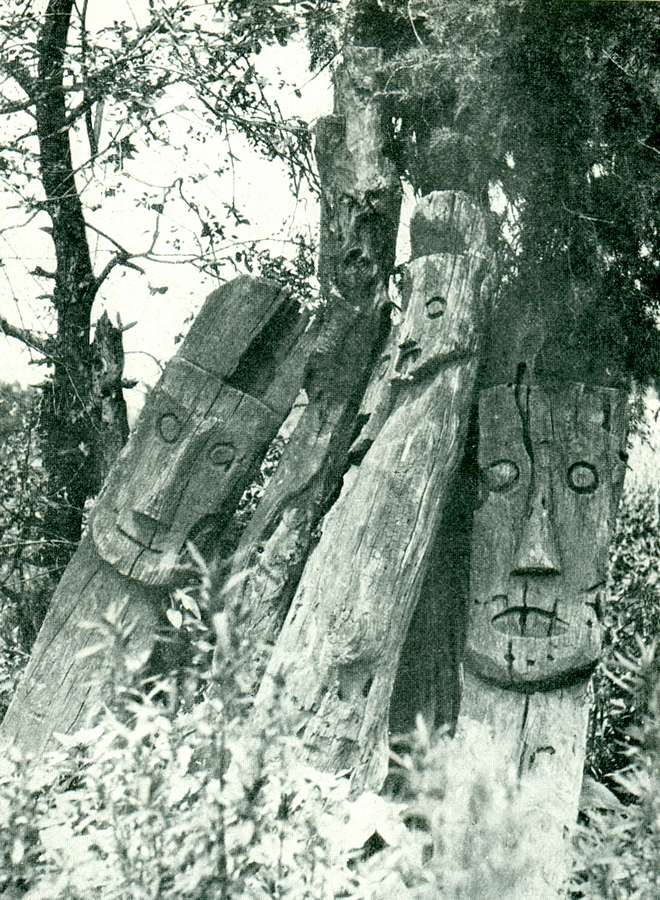
The Koreans Are Confirmed
Sightseers
The seclusion and beauty of these mountain
fastnesses at once attracted immigrants and afforded
them the necessary protection.
No other people on earth, certainly none so
backward in the scale of civilization, is so
passionately addicted to sight-seeing and
pleasure-seeking or so sensitive to the charm of
landscape as the Korean. 'They will travel miles on foot
to climb a pass or see a view, celebrating their arrival
on the crest hy a mild jollification and by the deposit
of a stone or the suspension of a rag in the little
wayside shrine that crowns the summit, or, if they are
sufficiently educated, by the composition of a few lines
of doggerel verse.
To a people with such tastes the Diamond
Mountains have always appealed with an irresistible
fascination. There, in an area only 30 miles long by 20
broad, shut off from the rest of the world and
accessible only by a few mountain passes, are still to
be found more than 40 monasteries, which at the time of
my visit were said still to contain from 300 to 400
monks, as well as a small number of nuns, and lay
servitors to the number of a thousand. [In 1914, after
the Japanese annexation, the numbers were: monks, 443;
nuns, 85.]
They subsisted in the main on mendicancy,
wandering about the country, almsbowl in hand, and—such
is the simplicity or the superstition of the
inhabitants—extracting liberal supplies either for the
endowment of their idleness or the rebuilding and
redecoration of their dilapidated shrines.
The whole situation was a paradox, whether
we contrast the mise-en-scene with the inmates or the
professions of monkish life with its practice.
I have described the Keumkang San as I saw
them in the changing hues of autumn, and this is
generally regarded as the best season; but I believe
that the spectacle in spring, when the valleys and the
hills are carpeted with the bright hues of violets and
anemones. clematis and azaleas, and, above all, with
lilies of the valley, and when the hillsides are ablaze
with spring foliage and rhododendrons, the wild cherry
and flowering shrubs, is not less captivating.
We devoted the day after our arrival at
Chongansa to a march on foot—for no other method of
progression is possible in those regions except a sort
of native chair borne by men—to the neighboring
monasteries of Pakhuam, Pyounsa, Potakam, Makayum,
Panyang, and Yuchonsa.
The march was along the valley bottom, in
or alongside of or across the torrent bed, where a
foothold can onlv be secured by wearing the native
sandal of twisted string, and these have to be changed
every few miles. Pakhuarn was a tiny monastery, with
only three inmates. Pyounsa, with ten, was larger, and
had an abbot, wearing a huge circular hat.
Here was a newly painted temple with a
portentous drum, the size of a small tun, resting on the
back of a monster. There were brilliant paintings on the
walls and a pink gauze veil hung in front of the figures
of Buddha.
As we proceeded upstream the surface of the
rocks was scarred with the incised names of generations
of pilgrims, which must have taken days, if not weeks,
to cut.
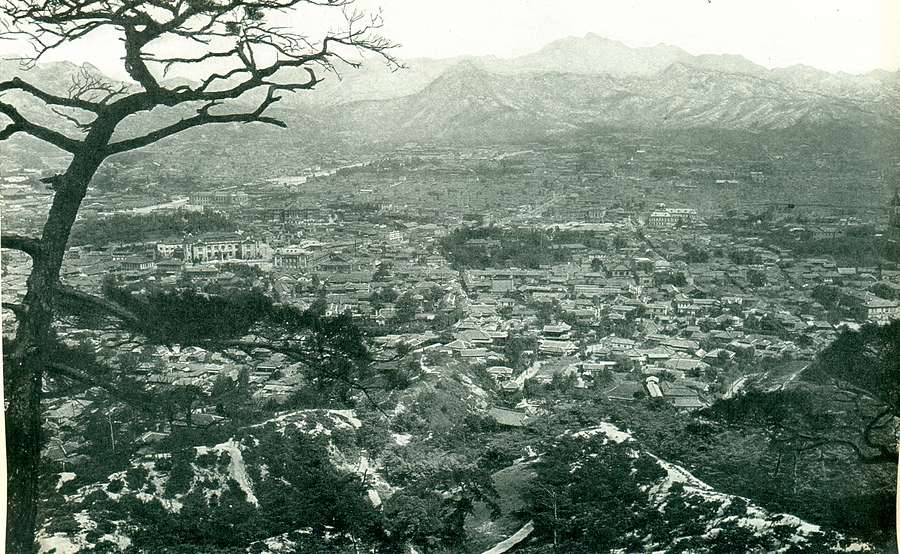 E. M. Newman
E. M. Newman
Seoul (this and the rest of the photos
have nothing to do with the Diamond Mountains)
The Grandest View in Korea
Behind Pyounsa, at the top of the hill
(2,750 feet), is seen the great view of the "Twelve
Thousand Peaks," said to be the grandest in Korea. The
title is merely a quantitative symbol; but if each
pinnacle and cone and spire in that wonderful outlook
were counted, it might be that the total would not be
found too high.
Potakam is not a place of residence, but an
altar to Kwanyin (the Goddess of Mercy), built high up
on a ledge to the right of the valley and supported by
iron girders and a cylindrical shaft or pillar of iron.
Near Makayum is a colossal image of Buddha, known as the
Myokil Sang, 40 to 50 feet high, sculpted in relief on
the face of the rock, with a small stone altar in front.
The right hand of the figure is raised and
the fingers of thc left are outspread across the breast.
The expression of the countenance is placid and serene.
Near Makayurn is some of the loveliest
scenery in these mountains. There, in a very beautiful
ravine, called Manpoktong, or the Grotto of Myriad
Cascades, is the Pearl Pool, Chinjutam; a neighboring
peak, with a wonderful outline. is Sajapong, the Lion
Peak, and a little farther to the northeast are two
Manrnulsangs, New and Old, which means "Aspect of Myriad
Things," the idea being that the fantastic rocks in
these areas resemble, as they might well be thought to
do, all existing shapes in the world.
Were such scenery to be found in Europe,
thousands of visitors would pour to it from every part
of the Continent.
From here we crossed the watershed by a
very steep climb over the Naimuzairyung Pass, 4,300 feet
above the sea, which is visible from it in clear
weather, and descended upon the small monastery of
Panyang, and the much larger and recently restored
establishment of Yuchonsa.
A great deal of money had been spent here;
and the abbot and his following, of whom 13 monks and 8
lads happened to be home (there are said to be 100 monks
in all), were on a different plane, both of cleanliness
and manners, from their neighbors.
Yuchonsa is now the largest monastery in
the Diamond Mountains and comprises no fewer than 22
buildings. The main temple contained a very elaborate
carved and painted erection or iconostasis, with 53
little images of Buddha, each perched on a little stand
with a silk cloth below, and framed in a
grotesque-colored background, made to represent the
roots and branches of a tree twisted in the most
fantastic convolutions. On either side of this
monstrosity were two great fan-shaped bouquets of
scarlet and white flowers.
A nine-storied pillar or stone pagoda stood
in the court, on the right hand of which were three
temples, with small grotesque seated figures all round,
and fresh paintings on the ceiling.
The guest chambers of this monastery were
the best that we had seen, and we ate our lunch in a
small room with a papered floor, warmed by a flue
beneath.
I have said little about the scenery on
this day's march, which was a total distance of 90 Ii,
or between 25 and 30 miles. But it was as glorious as
any that had preceded it, though the march was much more
fatiguing, a good deal of it being over slippery and
slanting boulders by the torrent side, on which the
traveler could not possibly retain his footing in soled
boots and where he would be helpless without the native
string sandal.
ln parts it is a nasty climb, for the rocks
have been worn smooth by the attrition of pilgrims' feet
for centuries, and just below glimmers many a deep pool.
into which the slightest misstep will send the wayfarer
headlong.
The torrent must further be crossed and
recrossed many times by slender bridges. composed
sometimes of a single pine stem. A further peril arises
from the stepping-stones, consisting of rude boulders,
uneasily perched in the foaming stream and wobbling
under the tread.
The return journey from Yuchonsa to
Chongansa was made by a different route, and we did not
get back till 7 :30 p.m., after a day of 13 hours.
Watch, Knife, and Cash Disappear
After another night at the foot of the
altar whence the smiling Buddha looked down, we packed
up before 6 in the morning to resume our journey to
Seoul. Then it was that my watch and chain and knife and
the whole of my spare cash were found to have
disappeared from under my pillow, where they had been
hidden throughout the night.
A prolonged altercation ensued, in which
everyone, from the abbot downward, took part—indignant
charges on the one side, violent protestations of
innocence on the other.
Over an hour had been spent on this futile
fusillade when it became necessary to act. Accordingly
we announced our intention to take the abbot (who, by
the way, could hardly have been mistaken for an
ecclesiastical dignitary in any country but Korea) with
us to Seoul, and we placed him in the custody of the two
official yamen runners who had been deputed to
accompany our party.
At 7:15 a.m. we were on the road, the
arrested abbot walking sulkily between his guards in the
rear. I can see the swarthy vagabond as I write.
Valuables Found, Abbot Released
We had not proceeded for more than a
quarter of a mile when a shout was heard from behind and
a monk came running after us, holding the recovered
watch and chain and knife in his hand. The cash had, of
course, disappeared.
The abbot was released, and returned to his
peccant flock; but there was no need to offer him the
customary tip, since his followers had thus effectively
anticipated its voluntary presentation. Had we taken him
to Seoul, I tremble to think what might have been his
fate.
From the valley we presently climbed to the
top of the Tanpa Ryong, or Crophair Ridge (so called
because on reaching this point the candidate for the
cloister in olden days was supposed to divest himself of
his locks and to assume the shaven crown). Here is a
magnificent double view—on the one side the entire sweep
of the Keumkang San range, 20 miles in length, the
russet vesture of the foreground leading up to the
bewildering panorama of gray steeples, pinnacles, and
crags, just tipped with a cloud cap on the topmost
spires; on the other side a valley equally as noble as
that we had left, and beyond this the mountains, billow
rolling upon billow for from 60 to 70 miles, till lost
in the blue haze of the horizon.
Next day we rejoined the main road to Seoul
at Changdo; and so ended my never-to-be-forgotten visit
to the monasteries and mysteries of the Diamond
Mountains.
Since the Japanese annexation of Korea the
monasteries have been subjected to strict regulations as
regards their property, their buildings, the choice of
the superior, the tenure of office, ancl the course of
life. There is now an examination for the priesthood;
and I am afraid that if I went back to my former haunts
I should no longer find myself the victim of monkish
thieving or be able to arrest an abbot of Chongansa.
The remaining photos are of
mostly unidentified places and with unknown dates
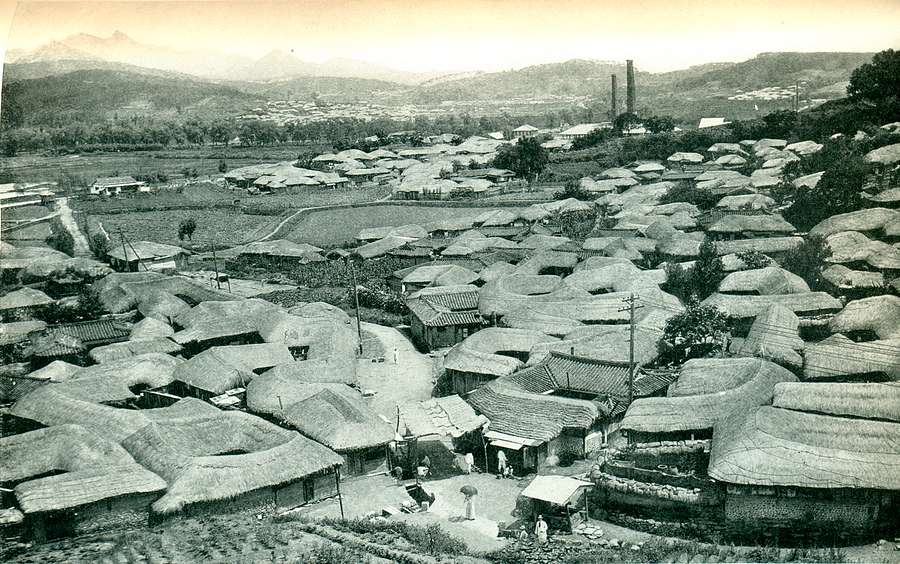 E. M. Newman
E. M. Newman
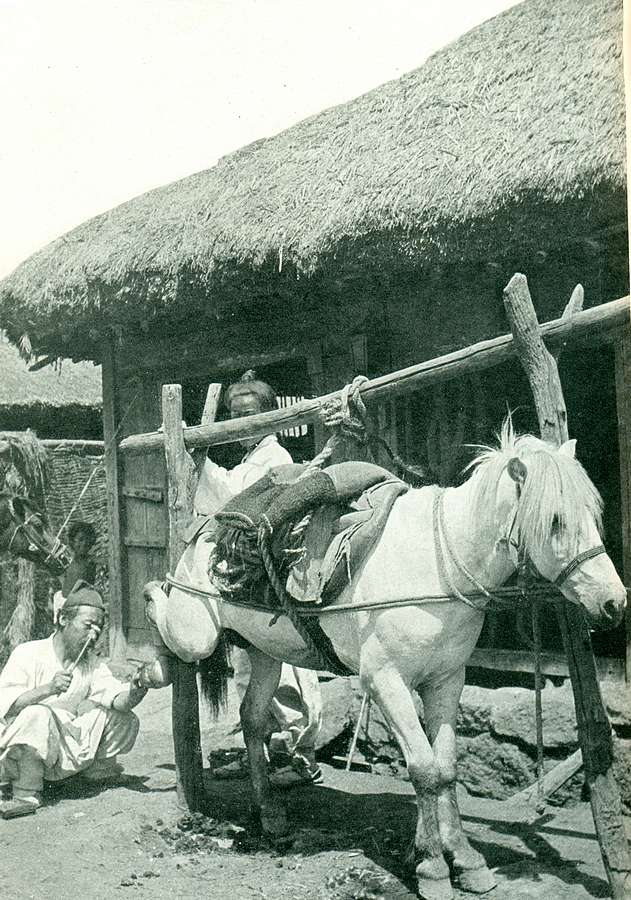 Underwood & Underwood
Underwood & Underwood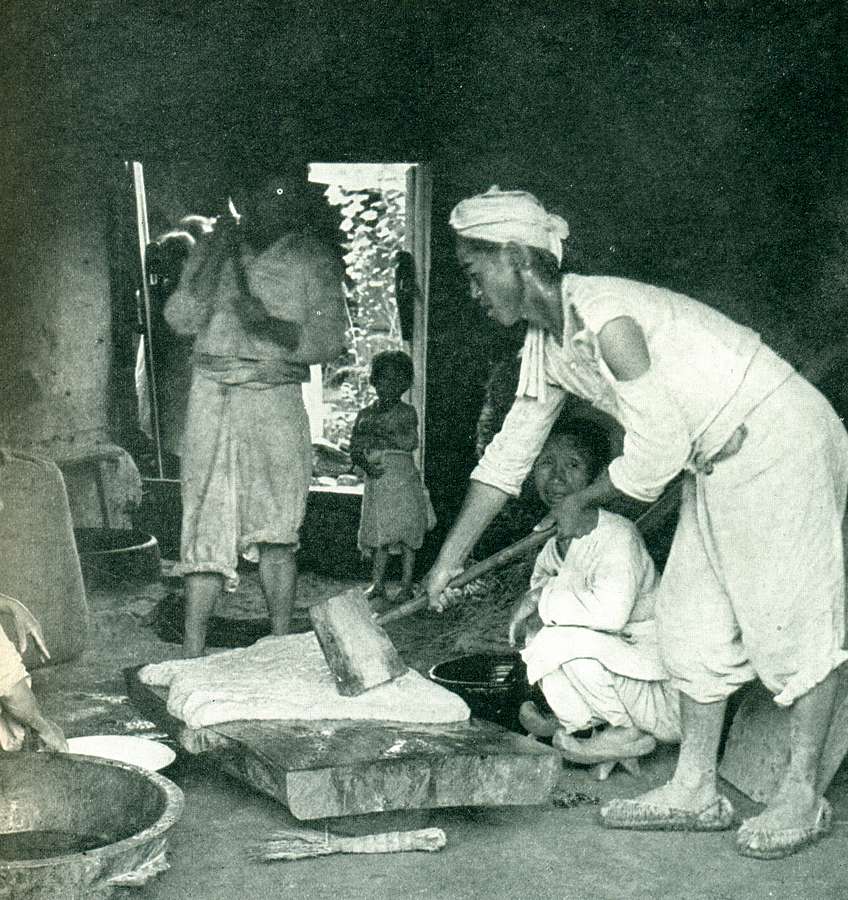
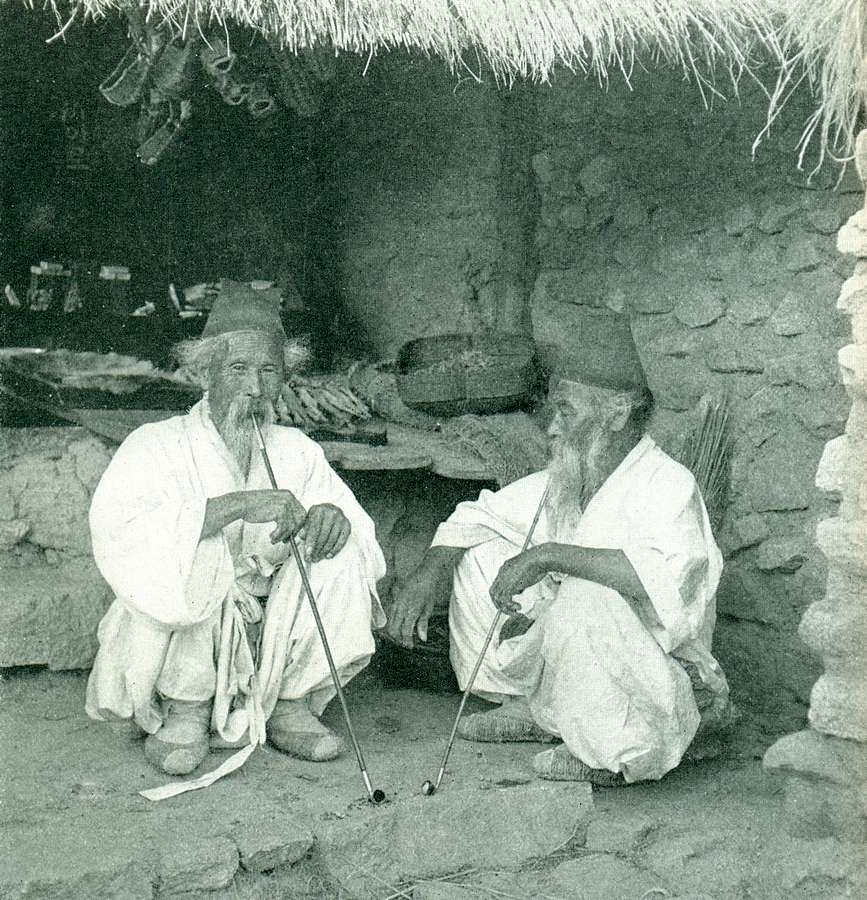 Underwood &
Underwood
Underwood &
Underwood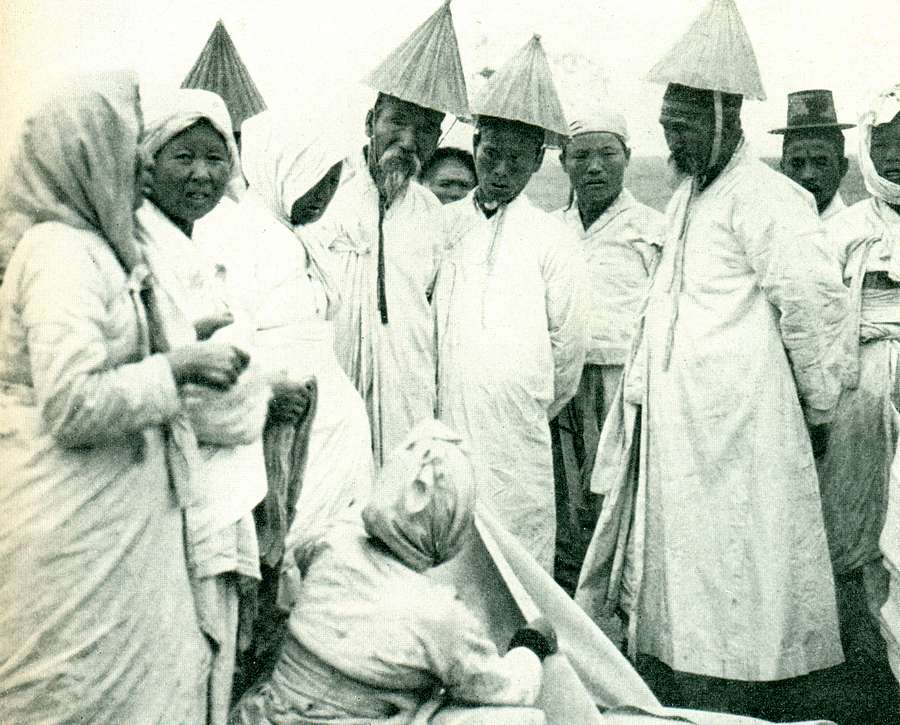
In Daegu
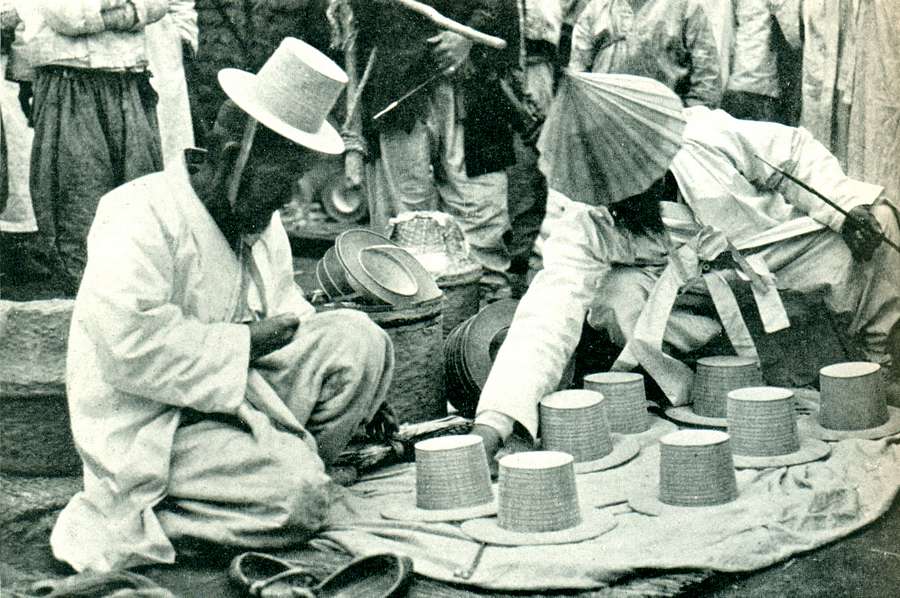 Graham Romeyn
Taylor
Graham Romeyn
Taylor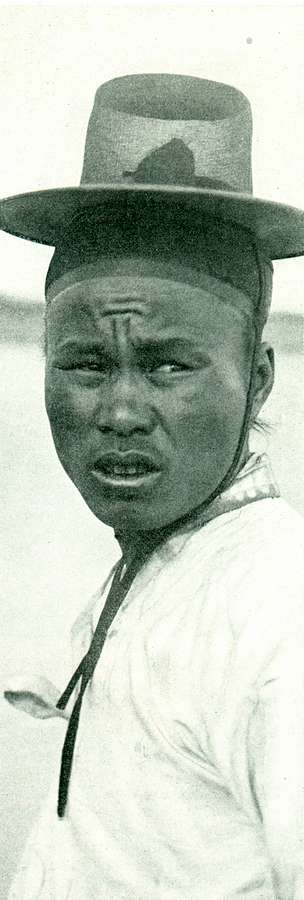
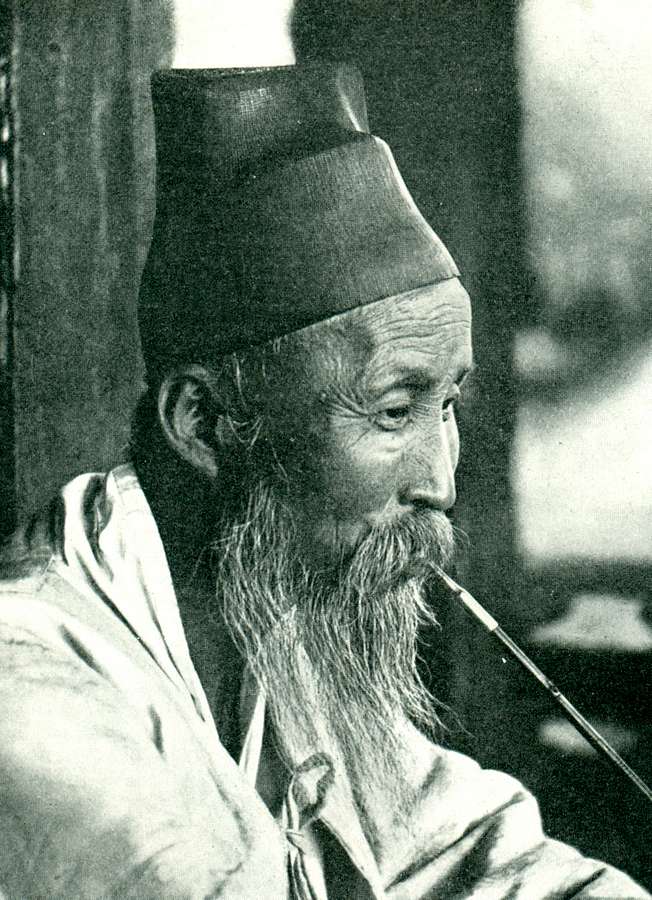
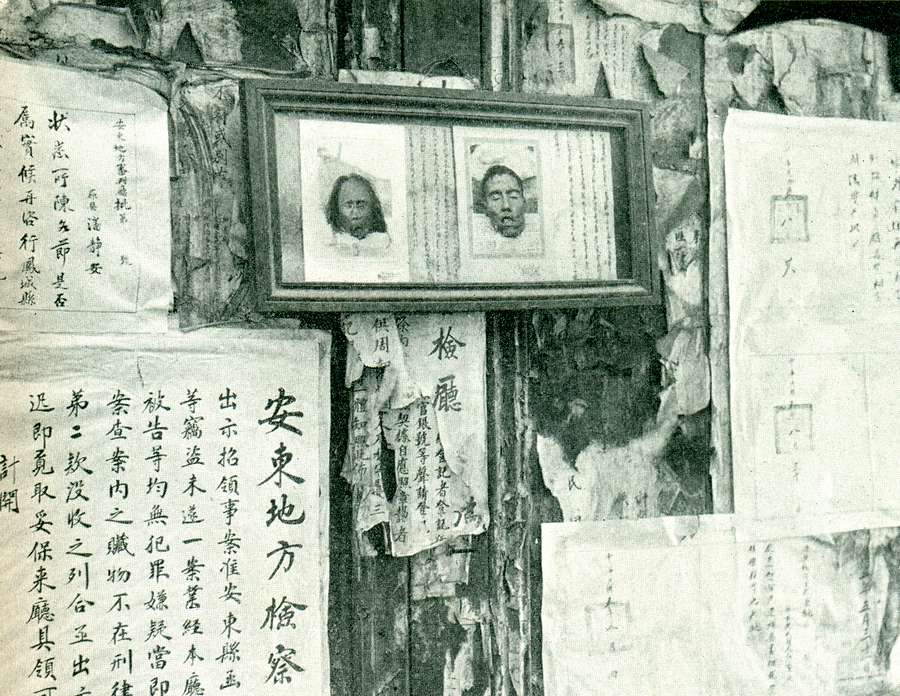 J. B. Millet
J. B. MilletPolice station notice board: Warning, thieves will be beheaded.
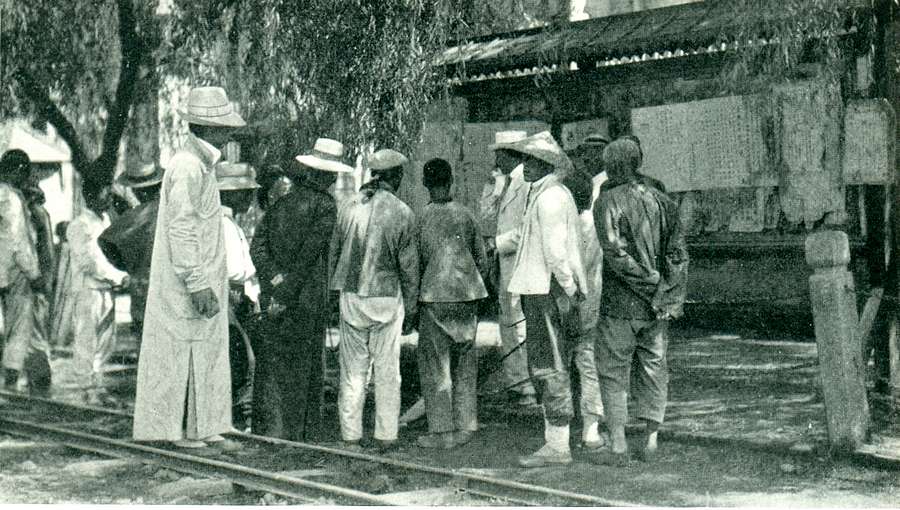 J. B. Millet
J. B. Millet